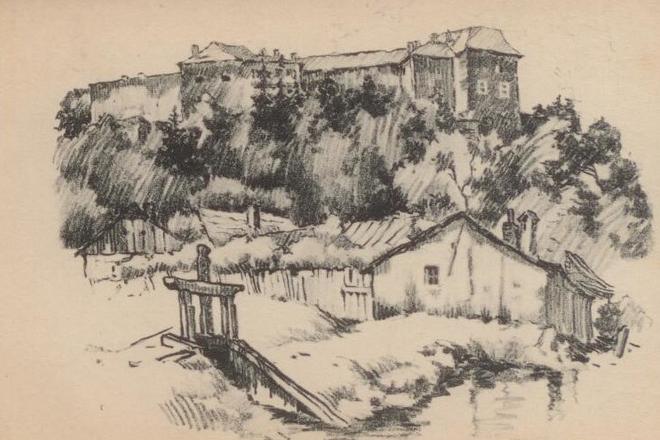Since the Russian invasion of Ukraine, Uzhgorod has been known the town on the Ukrainian side of the Vyšné Nemecké-Uzhgorod border crossing into Slovakia. The town is worth visiting for its own sake, however, including the castle above it.
Immediately after the end of the First World War, Slovak painter Janko Alexy, then wandering as a young man around the country, drew picturesque artworks from this area into his sketch-book. Among the pages is the Uzhgorod castle, which belonged to then-Czechoslovakia in the years 1918 – 1938.
Nostalgic memories can also be connected, though, with the Great Moravian era (870 - 907). A Slavonic nobleman called Laborec lived in the fortified settlement which preceded the current castle.
Laborec ruled at the fortified settlement until 897 when his army was defeated by nomadic tribes of ancient Hungarians. The count drowned fleeing the battlefield in a nearby river which allegedly got its name from him: Laborec. It is hard to establish, however, whether things were not quite the other way round – whether he was not named after the river. After Laborec’s defeat, Uzhgorod fell into the hands of the oldest Hungarian royal family, the Árpáds, for two and a half centuries.
Of course, the castle changed hands several times after that. Its great fame and at the same time great fall came in 1711. Uzhgorod became the centre of anti-Habsburg rebels and for some time seemed a place of importance and independence. However, this time was very brief, as castles which defied the Habsburgs often ended in flames or as permanent garrisons of the Hungarian army. Ultimately, Uzhgorod was occupied by Austrians.
From 1775 until 1945, a Byzantine Catholic seminary was located in the castle.
This story was first published by The Slovak Spectator on September 19, 2017. We have updated the piece to keep it relevant for today.

 The Uzhgorod Castle. (source: Courtesy of B. Chovan)
The Uzhgorod Castle. (source: Courtesy of B. Chovan)